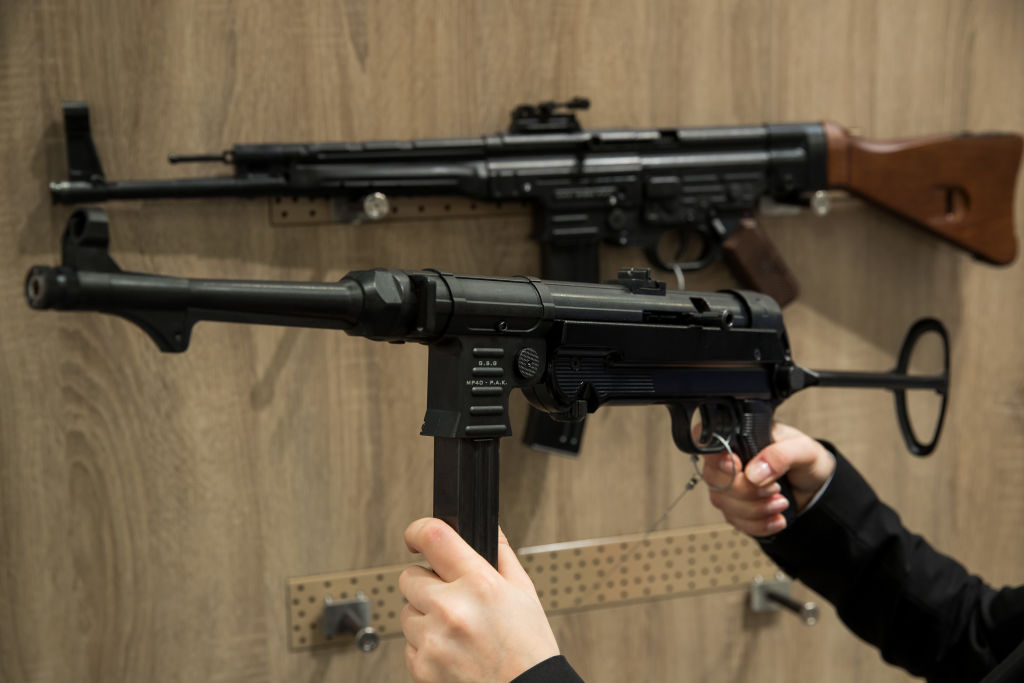The early 20th century saw two major wars fought within only a few decades, and since most of the world’s powers were taking part, the weaponry used advanced rapidly. This was certainly true of machine and submachine guns. One of the most popular and effective ones used during the Second World War was Germany’s MP 40, which was equipped by those fighting for the Axis powers.
Early machine guns
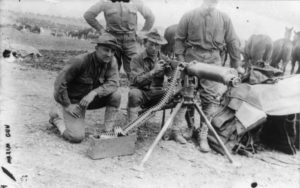
Both sides heavily used machine guns during the First World War. These weapons, however, were overly clunky and heavy. The fact many had to sit on a tripod and needed carried by multiple soldiers also made them difficult to use, and that’s not to mention that they often overheated and became jammed.
In 1918, the German Army began using the MP 18, the first submachine gun ever used in combat. The weapon was primarily used by those specializing in trench warfare. While the MP 18 didn’t prevent the Germans from losing the war, more than 25,000 units were produced. However, there was a clause in the Treaty of Versailles, which banned further production of submachine guns. As such, the MP 18 stopped being manufactured in the 1920s.
Development of the MP 40
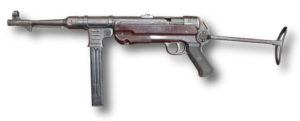
In 1928, Germany restarted work on submachine guns. Over time, the country created both the MP 36 and the MP 38, each named “M” for Maschinenpistole, followed by the year the gun was fabricated.
In 1940, designer Heinrich Vollmer took what was learned from those to create the MP 40. The weapon was far from the Maxim guns and MP 18s used in World War I. Chambering the 9 mm x 19 mm Parabellum cartridge, it was an open-bolt, blowback-operated automatic firearm. It eliminated a number of the MP 38’s features, such as the circular opening on the magazine housing and the grooving on the receiver and bolt.
In order to build plenty of them quickly, the MP 40 was made from stamped steel, with electro-spot welding. With the Germans launching the Second World War, the weapon soon went into mass production. By 1945, it’s estimated around 1.1 million MP 40s had been produced.
Axis soldiers were big fans of the MP 40
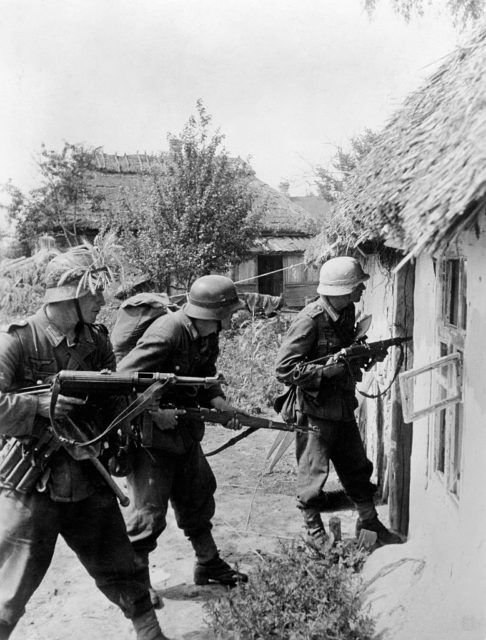
The MP 40 had features soldiers immediately appreciated. The main goal in producing new submachine guns was to make them easier to carry. The MP 40 achieved this, in part, by having a foldable stock. When the weapon was not in use, the stock could be folded back, resulting in a shorter, more portable firearm.
German troops fighting against the Red Army on the Eastern Front soon realized the Mauser Karabiner 98ks they were carrying wouldn’t cut it against the Russians’ PPSh-41s, especially when it came to short-range urban combat. The Soviet-made PPSh-41 was similar to MP 40, but could be produced at a much lower cost.
Eventually, full platoons of German soldiers were outfitted with the MP 40 and its derivatives.
Continued use of the MP 40
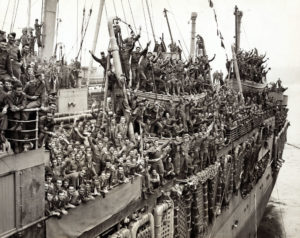
Weaponry advanced so rapidly during World War II that the MP 40 was essentially obsolete by the time the conflict ended. This was largely due to issues surrounding its 32-round magazine and the fact it could be misused as a handhold. Using the magazine this way often led the submachine gun to malfunction, and while German soldiers were trained to avoid holding it in this way, mistakes occurred on the battlefield.
In the last years of the war, many Germans had traded up to the StG 44. Some MP 40s found a home in the United States, as American troops brought them home as souvenirs. The Allied forces also collected tens of thousands of them, and they were later distributed to paramilitary groups in developing countries.
This phenomenon wound up working against the US, as the Viet Cong got their hands on MP 40s and, as could be expected, used them against American forces during the Vietnam War. MP 40s were also used by the Israelis during the 1948 Arab-Israeli War, and by the Algerian National Liberation Army and both the ZIPRA and ZANLA of Zimbabwe.
Influencing future weapons
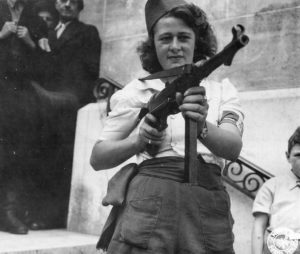
The MP 40 might have been replaced before the end of WWII, but it certainly influenced the development of future weapons. American designers studied its construction while working on the M3 “Grease Gun,” and its folding stock was mimicked by the makers of the PPS-43 and some models of the AK-47.
More from us: The M134 Minigun Was Designed for Helicopter Crews in the Vietnam War
Along with those, the submachine gun also directly influenced the German Selbstladebüchse BD 38 replica and the Spanish Star Z45. The MP 40’s magazine was also used in the Belgian Vigneron, which was produced during the 1950s.
